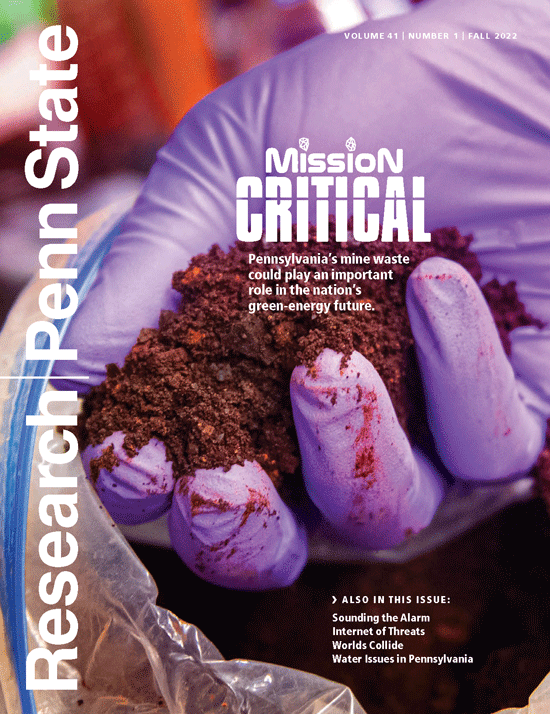Research|Penn State - Mission Critical
Pennsylvania's mine waste could play an important role in the nation's green-energy future.
Volume 41 | Number 1 | Fall 2022

They aren’t called ‘critical minerals’ for nothing.
Think of any technology that’s part of a clean-energy economy: electric vehicles, wind turbines, solar panels. Think of the devices we depend on for work and play: smart phones, computer hard drives, flat screen monitors, rechargeable batteries. Or the systems that undergird our national defense: lasers and missile guidance, radar and sonar.
All of these depend on critical minerals
The U.S. Geological Survey currently designates 50 minerals as critical to the U.S. economy or its national security or both. That number includes the so-called rare-earth elements—the 15 lanthanide metals at the bottom of the periodic table plus scandium and yttrium—along with the battery metals lithium, cobalt, nickel, and manganese, as well as platinum, aluminum, and graphite, among others.
With the accelerating shift toward renewable energy, need for these materials is rising sharply. By 2030, according to Bloomberg, demand for nickel and aluminum will increase 14-fold, with graphite and lithium not far behind.
Read more by downloading pdf or read more online.
